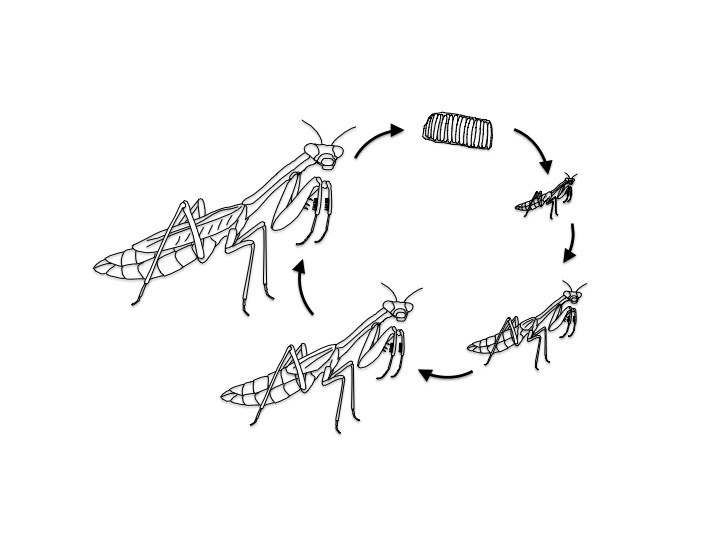Also called Praying Mantid, Mantis, or Locust
Class Insecta, Order Matodea, Family Mantidae
Where do you find them? Found worldwide but most common in tropical and subtropical climates. There are only 5 different species of mantids commonly found in the United States and 3 of these are imports from other countries.
They are found primarily on vegetation and may mimic sticks, leaves, bark, and flowers with their shape and colors. They can fly but usually walk from plant to plant.
What do they eat? Mantids are carnivores and mostly eat other insects. Some species even eat vertebrates, including small birds, frogs and lizards. Because they eat other insects, they are usually considered a beneficial insect...but in reality, mantids do not discriminate between pest and non-pest insects when feeding, and they may eat other beneficial insects. Most species are known to engage in cannibalism...eating each other.
Other behaviors: If threatened, mantids will “stand” tall as they can and spread their front legs to appear larger and more frightening. They will bite to defend themselves but are not venomous. Some species can expel air from their spiracles, making a hissing sound to scare off predators, like the hissing cockroaches.
Facts: Mantids are the only insects that can turn their head from side to side without moving any other part of their body.
Life Cycle: Incomplete metamorphosis (Hemimetabolism). Females lay up to 200 eggs in a frothy mass called an ootheca, which hardens and protects the eggs as they develop. In cooler climates, the ootheca is usually produced in the late summer/early fall and the eggs overwinter. Nymphs emerge from eggs in the spring and undergo 5 – 10 molts while developing to the adult stage.
